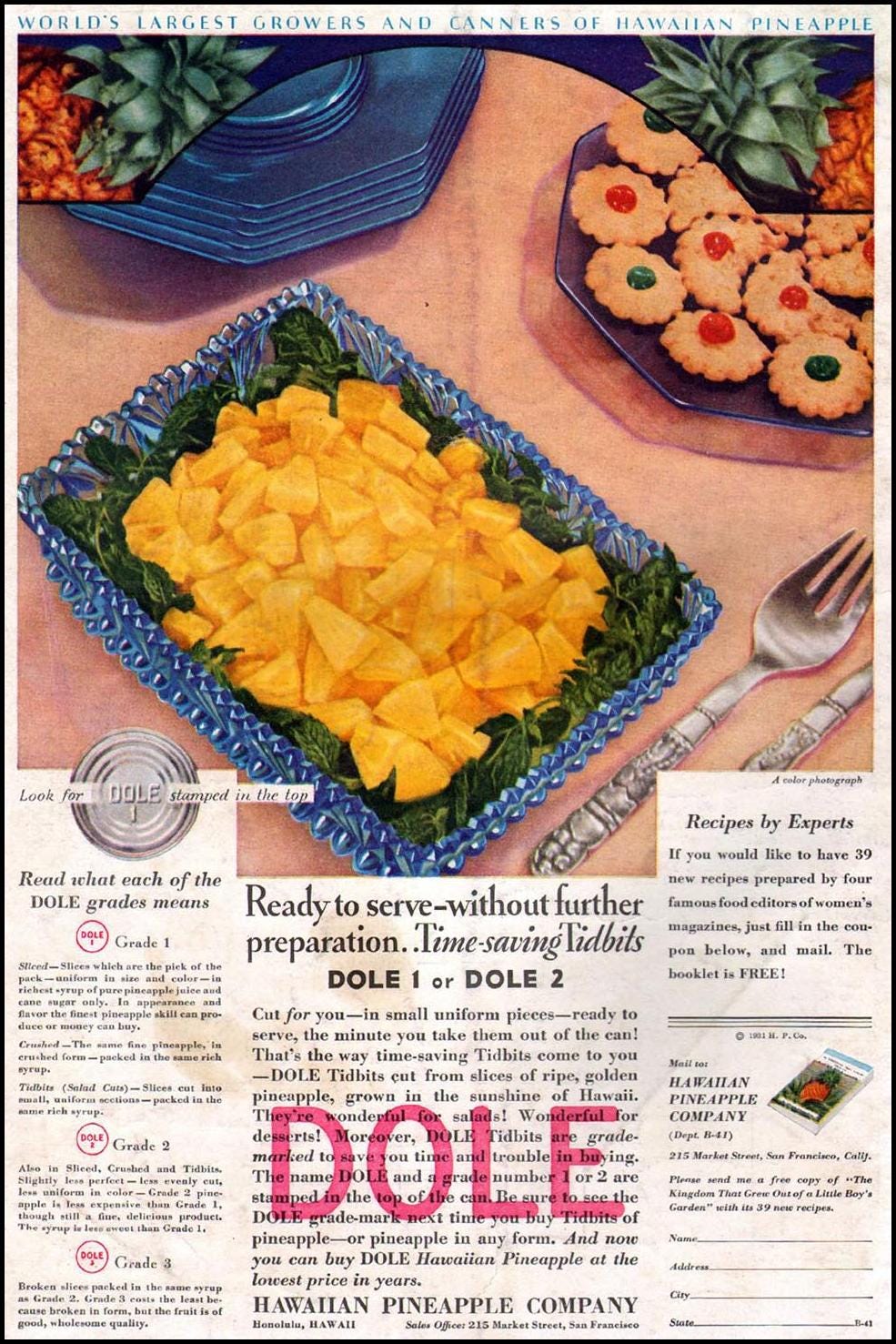Welcome back to our series, twenty shades of “time is money”. Every Tuesday we’re breaking down findings from my research on social acceleration, marketing, and consumer culture.
This research helped me better understand my own relationship to time and consumption (and specifically, the felt need to constantly be busy and hurry through life and buy things as an antidote to this frenzy). Thank you for reading, and I hope there is a nugget of inspiration for you here too!
This week we’re covering the third way that “time is money” shows up in consumer culture1:
The modern pace of life demands CONVENIENCE.
Convenience is a theme we’re all familiar with: life is fast; we need to keep moving with the flow; marketers promise to help us maintain the pace of our days if we buy into a product or service.2
Here’s a sampling of advertisements depicting increasing convenience throughout 20th century US consumer culture:





Before many innovations of the 20th century, life used to be in incredibly inconvenient. Every meal made from scratch; every calculation figured by hand; every cross-country trek plagued by bumps and danger in the night.
So make no mistake, I’m not trying to fetishize all the ways of the past.
Many of us are now in the fortunate position to decide what level of convenience or inconvenience we want to experience in our lives.
I get groceries delivered to my home, because it is convenient.
I call in for a tele-health appointment rather than driving across town, because it is convenient.
And the fox cake I put myself through the trouble of making for my three-year-old’s birthday, which almost brought me to tears after 8 hours and 6 sticks of butter, a task that was thoroughly inconvenient3? At least I had a choice. I could have bought a Betty Crocker cake mix.
There’s nothing objectively wrong with convenience. “Time saving tidbits”? Thank goodness, because I don’t want to cut up an entire pineapple.
The dark side of convenience culture occurs when anything remotely inconvenient (or, time-consuming) is squeezed out, in favor of only convenient things.
Or when our tolerance for the messy, inconvenient things of life (like the work of relationships, caretaking, learning, trying, creating, failing) diminishes to a point where we do not have the patience.
Or when our internal rhythms and attention spans shorten to only accept the brief and the harried.
“Time is money” trains us to be constantly productive and efficient, to let no time squander. The modern pace of life demands convenience. But what if we squander the richness of life that can come from inconvenience, in order only to save time?
If you missed the tutorial on how I analyzed hundreds of vintage advertisements for their symbolic meanings, you can find that here!
According to the theory of social acceleration, the pressure to be constantly productive and efficient is a consequence of the increasing pace of social change and technological innovation. The faster society changes, the more pressure individuals feel to keep up, and the more they prioritize efficiency and productivity in order to succeed in this fast-paced environment. Enter… convenience.
This ended up being the perfect example of the “yeah I can buy it for $50, OR I can spend $30 on supplies and 8 hours making it myself.” However, I desire to learn how to bake and decorate cakes, so this is the inconvenience of learning a new skill. Still, I’m hoping for increasing marginal returns over time.






